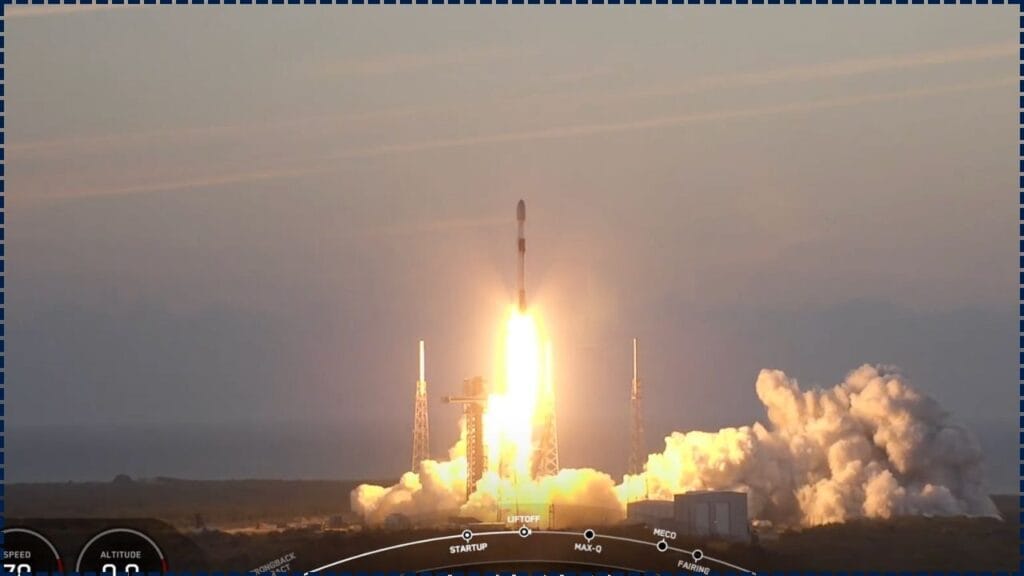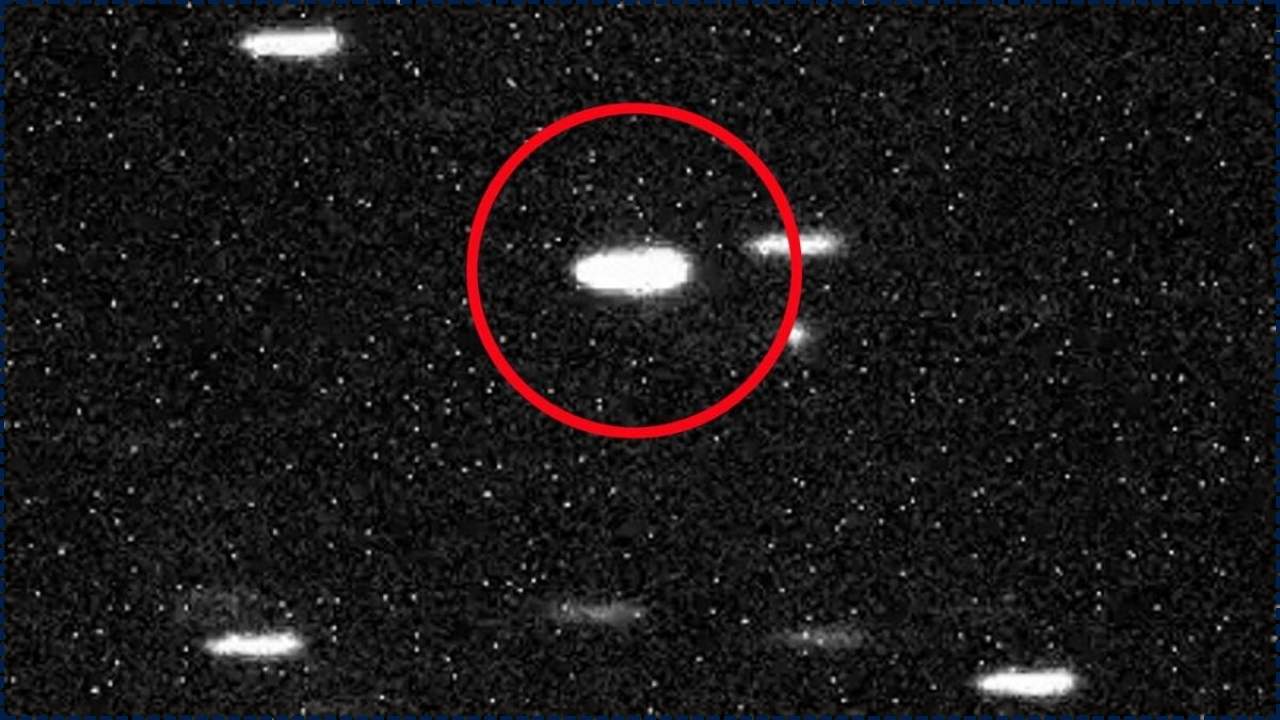SpaceX Falcon Rocket launches next-gen GPS satellite for the U.S. Space Force and Lockheed Martin in a mission that marks a huge leap in satellite tech and military readiness. On May 30, 2025, the skies above Cape Canaveral lit up as a Falcon 9 rocket blasted off, carrying the GPS III SV-08 satellite—nicknamed “Katherine Johnson”—into orbit. This wasn’t just any satellite launch. It was a high-speed, high-stakes, high-tech operation with national security and global navigation at the center.

Let’s unpack what makes this mission a game-changer for the U.S. military, Lockheed Martin, and all of us who rely on GPS every day.
SpaceX Falcon Rocket Launches Next-Gen GPS Satellite
| Category | Details |
|---|---|
| Launch Date | May 30, 2025 |
| Launch Vehicle | SpaceX Falcon 9 Block 5 |
| Launch Site | Space Launch Complex 40, Cape Canaveral Space Force Station, Florida |
| Payload | GPS III SV-08 “Katherine Johnson” |
| Developer | Lockheed Martin |
| Agency | U.S. Space Force |
| Orbit | Medium Earth Orbit (MEO) |
| Signal Improvements | L1C signal (civilian), M-Code (military) |
| Recovery | First-stage booster landed on “Just Read the Instructions” droneship |
| Watch Launch | YouTube Live Stream |
The successful launch of GPS III SV-08 by SpaceX marks a turning point in how fast, smart, and secure satellite tech can be. Backed by the U.S. Space Force and built by Lockheed Martin, this next-gen satellite enhances everything from military missions to mobile apps.
With faster timelines, smarter partnerships, and stronger tech, America’s GPS future is officially in orbit. And we’re all better connected because of it.
What’s So Special About GPS III SV-08?
GPS III SV-08 isn’t your everyday satellite. It’s part of the new wave of high-tech GPS satellites designed to deliver three times better accuracy and eight times better anti-jamming capabilities than the old generation. That means it’s harder for bad actors to block or interfere with the signal—and way easier for users (from your smartphone to military units) to get pinpoint accuracy.
Here’s what stands out:
- L1C Signal: This new civilian signal is interoperable with international systems like Europe’s Galileo, Japan’s QZSS, and others.
- M-Code Signal: A jam-resistant, encrypted channel just for military use.
- Atomic Clock: GPS III satellites carry the most accurate atomic clocks ever put in orbit.
So, whether you’re calling an Uber, playing Fortnite, or flying a jet over hostile terrain, this satellite’s got your back.
Lightning Fast: A Record-Setting Launch Timeline
This mission wasn’t just about better tech—it was also about speed. The SV-08 launch happened just three months after the satellite was delivered to the launch site. That’s light-speed compared to the usual 12-24 month prep time.
Here’s how they pulled it off:
- Built at Lockheed Martin’s Colorado facility and flown to Florida on a U.S. Air Force C-17 Globemaster III.
- Teams worked around the clock at Cape Canaveral to prep the vehicle.
- Close coordination between SpaceX, Lockheed Martin, and Space Force teams made it possible.
This kind of efficiency means the military can respond faster to satellite outages, attacks, or tech upgrades.
The SpaceX Factor: Reliable and Reusable
SpaceX isn’t new to the game, but they keep leveling up. The Falcon 9 rocket that launched SV-08 used a reusable first-stage booster, which landed safely on the droneship “Just Read the Instructions.”
Why that matters:
- Cost savings: Reusing boosters cuts down launch costs dramatically.
- Quicker turnarounds: Less time between missions.
- Sustainability: Fewer rockets mean less waste and lower emissions.
Add that to SpaceX’s near-perfect launch record, and you’ve got a partnership the U.S. military loves to lean on.
GPS and the Modern World: Why It Matters
We all use GPS—probably a dozen times a day. But it’s not just about getting directions.
Real-world examples of GPS at work:
- Emergency Response: GPS helps first responders locate disasters and victims.
- Banking: ATM networks rely on GPS time signals to process transactions.
- Power Grid Management: Utility companies use GPS timing to synchronize electricity flow.
- Aviation: Pilots use GPS to navigate safely and efficiently.
Without GPS? Flights get grounded. Banks glitch. First responders stumble.
And that’s why SV-08 is critical. It’s part of a larger plan to modernize and secure the 31-satellite U.S. GPS constellation.
Avoid Student Loans Entirely? These Smart 529 & Transfer Moves Could Save You Thousands
Trump’s Latest Tariff Gamble: Is His Trade War Strategy on the Brink of Collapse?
Nvidia Stock Surges After China Export Fears Ease; Sales Impact Smaller Than Expected
Military Benefits: Security on a Global Scale
For the U.S. military, the stakes are even higher. The M-Code signal makes GPS more secure and resilient against spoofing and jamming. This means:
- Better battlefield coordination
- More precise missile guidance
- Improved drone and aircraft navigation
In fact, top brass at the U.S. Space Force called the SV-08 deployment “a key asset in maintaining global security.” That says it all.
What This Means for the Industry
The success of SV-08 sets new standards across the board:
- Faster delivery-to-launch timelines
- New tech capabilities for both military and civilian users
- Private-public partnerships that work under pressure
It’s a clear sign that the future of space isn’t just about exploration. It’s about infrastructure, innovation, and national security.
FAQs About SpaceX Falcon Rocket Launches Next-Gen GPS Satellite
Q: What makes GPS III satellites better than previous ones?
A: They offer greater accuracy, stronger signal integrity, and better jamming resistance for military and civilian users.
Q: How many GPS III satellites are up there now?
A: As of June 2025, eight GPS III satellites are operational.
Q: Can the average person benefit from SV-08?
A: Absolutely! GPS III boosts signal strength and consistency for everyday tech like phones, cars, and smart devices.
Q: Why is the satellite named “Katherine Johnson”?
A: It honors the NASA mathematician whose work helped send astronauts to space. Naming satellites after space pioneers is part of Lockheed Martin’s tribute series.
Q: Will there be more launches like this?
A: Yes. The Space Force plans to launch at least 10 more GPS III satellites by the end of the decade.












